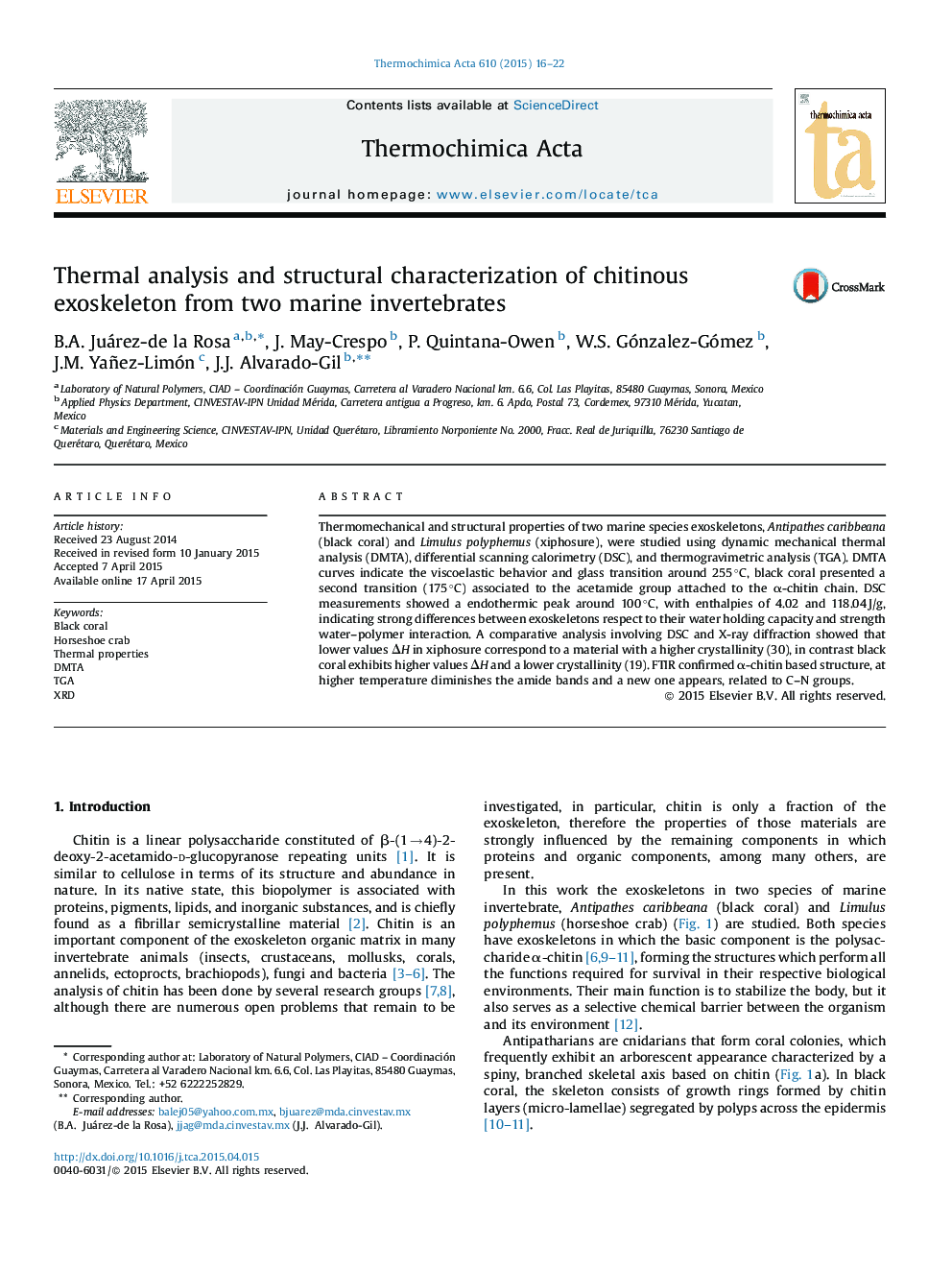| Article ID | Journal | Published Year | Pages | File Type |
|---|---|---|---|---|
| 672922 | Thermochimica Acta | 2015 | 7 Pages |
•Thermal analysis of exoskeletons: Antipathes caribbeana and Limulus polyphemus.•DMTA revealed Limulus has a stronger structure with a stepper glass transition.•DSC measurements exhibited a much larger water holding capacity in Antipathes.•X-ray diffraction analysis shows a higher crystallinity index in Limulus•FTIR showed α-chitin structures and high temperature C–N groups prevalence.
ABSTRACTThermomechanical and structural properties of two marine species exoskeletons, Antipathes caribbeana (black coral) and Limulus polyphemus (xiphosure), were studied using dynamic mechanical thermal analysis (DMTA), differential scanning calorimetry (DSC), and thermogravimetric analysis (TGA). DMTA curves indicate the viscoelastic behavior and glass transition around 255 °C, black coral presented a second transition (175 °C) associated to the acetamide group attached to the α-chitin chain. DSC measurements showed a endothermic peak around 100 °C, with enthalpies of 4.02 and 118.04 J/g, indicating strong differences between exoskeletons respect to their water holding capacity and strength water–polymer interaction. A comparative analysis involving DSC and X-ray diffraction showed that lower values ΔH in xiphosure correspond to a material with a higher crystallinity (30), in contrast black coral exhibits higher values ΔH and a lower crystallinity (19). FTIR confirmed α-chitin based structure, at higher temperature diminishes the amide bands and a new one appears, related to C–N groups.
Graphical abstractFigure optionsDownload full-size imageDownload as PowerPoint slide
